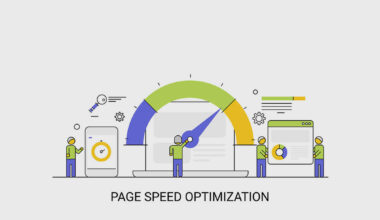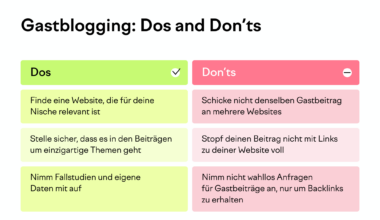Introduction to Competitor Analysis in SEO
As an SEO specialist, one of the essential tasks you need to perform is competitor analysis. It is crucial to analyze your competitors’ strategies to understand their strengths, weaknesses, and opportunities. This analysis helps you understand how to improve your SEO strategy, increase your website’s visibility, and outrank your competitors.
Competitor analysis is a process of identifying your competitors, analyzing their strategies, and evaluating their strengths and weaknesses. By understanding your competitors’ SEO strategies, you can identify gaps in your SEO strategy and improve your website’s visibility in search engines.
There are several types of competitor analysis, including:
- Keyword analysis
- Backlink analysis
- Content analysis
- On-page optimization analysis
Each type of analysis provides different insights into your competitors’ strategies, and combining them provides a complete picture of your competitors’ SEO strategy.
Conducting competitor analysis provides several benefits, including:
- Identifying gaps in your SEO strategy
- Discovering new keyword opportunities
- Evaluating your competitors’ content strategy
- Identifying potential backlink opportunities
- Staying up-to-date with industry trends
In the next section, we will discuss the various types of competitor analysis and how to conduct them in detail.
Defining Competitor Analysis
Competitor analysis is a crucial component of SEO strategy. It involves identifying your competitors, analyzing their SEO tactics, and evaluating their strengths and weaknesses to improve your own SEO. By conducting competitor analysis, you can gain insights into your competitors’ SEO practices, understand their website structure, and determine their ranking factors.
Competitor analysis is a continuous process that requires monitoring and analyzing your competitors’ activities regularly. It involves identifying your primary competitors, analyzing their website structure, and studying their keyword strategy, content strategy, backlink profile, and on-page optimization.
To conduct a comprehensive competitor analysis, you need to identify your primary competitors. These are the businesses that are targeting the same audience and using similar keywords. You can use various SEO tools like
Ahrefs
,
SEMrush
, and
SpyFu
to identify your competitors and conduct a detailed analysis.
Once you have identified your competitors, you can analyze their website structure and identify their ranking factors. You can study their website design, navigation, site speed, and mobile responsiveness to understand how they are attracting and retaining their visitors.
You can also analyze their keyword strategy to determine the keywords they are targeting and identify new opportunities. You can use tools like Google Keyword Planner, Ahrefs, and SEMrush to analyze their keyword strategy and identify new keywords.
Content analysis is another crucial aspect of competitor analysis. By studying your competitors’ content strategy, you can identify the topics they are covering, the type of content they are creating, and their content distribution strategy. You can use tools like BuzzSumo, Ahrefs, and SEMrush to analyze your competitors’ content strategy.
In conclusion, competitor analysis is a crucial component of SEO strategy that helps you understand your competitors’ SEO practices, identify new opportunities, and improve your own SEO strategy. By conducting a comprehensive competitor analysis, you can gain valuable insights into your competitors’ SEO practices and stay ahead of the competition.
Types of Competitor Analysis
When it comes to competitor analysis in SEO, there are several types of analysis you can conduct to gain insights into your competitors’ strategies. Each type of analysis provides different insights into your competitors’ SEO tactics, and when combined, they provide a complete picture of your competitors’ SEO strategy. In this section, we will discuss the different types of competitor analysis and how to conduct them.
1. Keyword Analysis:
Keyword analysis is the process of identifying the keywords your competitors are targeting and understanding their strategy behind it. This analysis helps you discover new keyword opportunities, optimize your existing content, and understand the intent behind each keyword. You can use tools like Google Keyword Planner, Ahrefs, and SEMrush to analyze your competitors’ keyword strategy.
2. Backlink Analysis:
Backlink analysis is the process of analyzing your competitors’ backlink profile to identify potential backlink opportunities for your website. By analyzing your competitors’ backlink profile, you can identify the websites that are linking to them, understand their anchor text strategy, and find new websites to target for link building. You can use tools like Ahrefs, SEMrush, and Moz to conduct backlink analysis.
3. Content Analysis:
Content analysis is the process of analyzing your competitors’ content strategy to identify the topics they are covering, the type of content they are creating, and their content distribution strategy. This analysis helps you identify gaps in your content strategy, create better content, and distribute it effectively. You can use tools like BuzzSumo, Ahrefs, and SEMrush to conduct content analysis.
4. On-Page Optimization Analysis:
On-page optimization analysis is the process of analyzing your competitors’ on-page optimization strategy to understand how they are optimizing their web pages for search engines. This analysis helps you identify the on-page elements that are critical for SEO, such as title tags, meta descriptions, header tags, and internal linking. You can use tools like Screaming Frog, Ahrefs, and SEMrush to conduct on-page optimization analysis.
In conclusion, conducting competitor analysis is crucial for improving your SEO strategy and staying ahead of the competition. By conducting different types of analysis, you can gain valuable insights into your competitors’ SEO tactics, identify new opportunities, and improve your own SEO strategy. Make sure to conduct regular competitor analysis to stay up-to-date with the latest trends and changes in the industry.
Benefits of Conducting Competitor Analysis
Conducting competitor analysis provides several benefits that can help you improve your SEO strategy and outperform your competitors. In this section, we will discuss the various benefits of conducting competitor analysis.
1. Identifying Gaps in Your SEO Strategy:
By analyzing your competitors’ SEO tactics, you can identify gaps in your own SEO strategy. You can use this information to improve your website’s visibility in search engines, optimize your content, and build high-quality backlinks. Identifying gaps in your SEO strategy can help you stay ahead of the competition and attract more organic traffic to your website.
2. Discovering New Keyword Opportunities:
Conducting keyword analysis on your competitors can help you discover new keyword opportunities for your website. By analyzing the keywords your competitors are targeting, you can identify new keywords that have a high search volume and low competition. You can use this information to optimize your content and attract more organic traffic to your website.
3. Evaluating Your Competitors’ Content Strategy:
Analyzing your competitors’ content strategy can help you improve your own content strategy. By studying the type of content your competitors are creating, the topics they are covering, and their content distribution strategy, you can identify gaps in your content strategy and create better content that attracts more traffic to your website.
4. Identifying Potential Backlink Opportunities:
Conducting backlink analysis on your competitors can help you identify potential backlink opportunities for your website. By analyzing the websites that are linking to your competitors, you can identify new websites to target for link building. Building high-quality backlinks can help you improve your website’s authority and visibility in search engines.
5. Staying Up-to-Date with Industry Trends:
Regularly conducting competitor analysis can help you stay up-to-date with the latest trends and changes in the industry. By analyzing your competitors’ SEO tactics, you can identify new trends and changes in search engine algorithms. This information can help you adjust your SEO strategy and stay ahead of the competition.
In conclusion, conducting competitor analysis is essential for improving your SEO strategy and outperforming your competitors. By analyzing your competitors’ SEO tactics, you can identify gaps in your own SEO strategy, discover new keyword opportunities, evaluate your competitors’ content strategy, identify potential backlink opportunities, and stay up-to-date with industry trends. Make sure to conduct regular competitor analysis to stay ahead of the competition and attract more organic traffic to your website.
How to Conduct Competitor Analysis in SEO
Conducting competitor analysis in SEO requires a systematic approach to identify your competitors, analyze their strategies, and evaluate their strengths and weaknesses. Here is a step-by-step guide on how to conduct competitor analysis in SEO.
1. Identify Your Competitors:
The first step in conducting competitor analysis is to identify your competitors. You can use SEO tools like Ahrefs, SEMrush, or SpyFu to identify your competitors. These tools provide insights into your competitors’ website traffic, keyword rankings, and backlink profile. Once you have identified your competitors, make a list of them and analyze their website structure.
2. Analyze Their Website Structure:
The next step is to analyze your competitors’ website structure. This analysis helps you understand how your competitors are attracting and retaining their visitors. You can analyze their website design, navigation, site speed, and mobile responsiveness. You can use tools like Google PageSpeed Insights, GTmetrix, or Pingdom to analyze their website performance.
3. Study Their Keyword Strategy:
Keyword analysis is an essential aspect of competitor analysis. By analyzing your competitors’ keyword strategy, you can identify the keywords they are targeting and discover new keyword opportunities. You can use tools like Google Keyword Planner, Ahrefs, or SEMrush to analyze their keyword strategy. Once you have identified the keywords they are targeting, you can optimize your content accordingly.
4. Analyze Their Content Strategy:
Content analysis is another crucial aspect of competitor analysis. By analyzing your competitors’ content strategy, you can identify the topics they are covering, the type of content they are creating, and their content distribution strategy. You can use tools like BuzzSumo, Ahrefs, or SEMrush to analyze their content strategy. Once you have identified their content strategy, you can create better content that attracts more traffic to your website.
5. Conduct Backlink Analysis:
Backlink analysis is the process of analyzing your competitors’ backlink profile to identify potential backlink opportunities for your website. By analyzing your competitors’ backlink profile, you can identify the websites that are linking to them, understand their anchor text strategy, and find new websites to target for link building. You can use tools like Ahrefs, SEMrush, or Moz to conduct backlink analysis.
6. Analyze Their On-Page Optimization Strategy:
On-page optimization analysis is the process of analyzing your competitors’ on-page optimization strategy to understand how they are optimizing their web pages for search engines. You can analyze their title tags, meta descriptions, header tags, and internal linking to identify the on-page elements that are critical for SEO. You can use tools like Screaming Frog, Ahrefs, or
Final Thought on the Importance of Competitor Analysis in SEO
Conducting competitor analysis is crucial for improving your SEO strategy and staying ahead of the competition. By analyzing your competitors’ SEO tactics, you can identify gaps in your SEO strategy, discover new keyword opportunities, evaluate your competitors’ content strategy, identify potential backlink opportunities, and stay up-to-date with industry trends.
Regularly conducting competitor analysis helps you understand how your competitors are performing in search engine rankings and what factors contribute to their success. By analyzing your competitors’ strategies, you can identify what works and what doesn’t and adapt your SEO strategy accordingly.
However, it is essential to note that competitor analysis is not a one-time task. It is an ongoing process that requires regular monitoring and analysis. Your competitors’ SEO tactics may change over time, and staying up-to-date with these changes can give you a competitive edge.
In conclusion, conducting competitor analysis is an essential component of a successful SEO strategy. By analyzing your competitors’ SEO tactics, you can gain valuable insights into their strengths and weaknesses and improve your own SEO strategy. So, make sure to conduct regular competitor analysis to stay ahead of the competition and attract more organic traffic to your website.






















